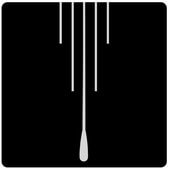The Clarinet Embouchure
Main Points
- Support the clarinet on your right thumb
- Roll your bottom lip in
- Flatten your chin and cheeks, pointing your chin down
- Place a small bit of mouthpiece in your mouth at a downward angle
- Firm the corners of your mouth by saying "ee"
The term embouchure refers to the muscles around your mouth and the shape your mouth and jaw must take to produce a good sound on your instrument. Forming a good embouchure takes time and practice, and you’ll find your mouth getting tired while playing until you’ve strengthened your embouchure muscles more. Below are the first steps to forming a good embouchure.
- Moisten your lips and ensure the clarinet is well supported on your right thumb.
- Roll your bottom lip in so that the plump, fleshy part your lip is resting on top of your teeth, creating a thin cushion for the mouthpiece.
- Your chin should be flat and pointed down. Don’t scrunch it. Use your jaw to also help flatten and firm up your cheeks. Your cheeks should not puff when you play.
- Center the mouthpiece in your mouth and let it rest gently on your bottom lip, with the reed facing down. It should enter your mouth at about a 35-degree angle.
- Place the mouthpiece about a 1/2 an inch or less into your mouth. It’s usually better to start with less mouthpiece rather than more.
- Your upper teeth will rest on the mouthpiece. Do not bite down! Your upper teeth are just resting while your bottom teeth form a cushion for the mouthpiece.
- Keep your mouth closed around the mouthpiece and say “ee”. The muscles on the corners of your mouth will become engaged; keep these muscles engaged and use them to support the mouthpiece. The corners may bend up slightly, but not as much as if you were smiling. You can also imagine your lips tightening as if stretching a rubbing band.
- Keeping the corners engaged, say “oo” to round your mouth slightly. You want to avoid puckering your lips, even while you gather your muscles toward the center.
This is simply a starting point. Over time you will find an embouchure that works right for you.
If you’re struggling to produce a good tone, try making subtle adjustments to the following things:
- Adjust how far rolled in or out your bottom lip is over your teeth.
- Adjust how much mouthpiece is in your mouth and the angle in which it enters.
- As a rule of thumb, if your sound seems too loud, honky, and out-of-control, your embouchure is too loose. If it sounds thin and pinched, you are too tight.
- Adjust the overall firmness of your lips, jaw, and cheeks.
